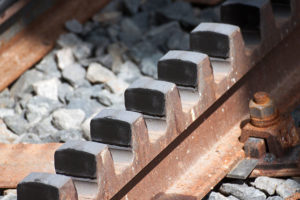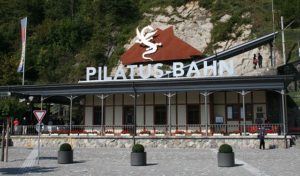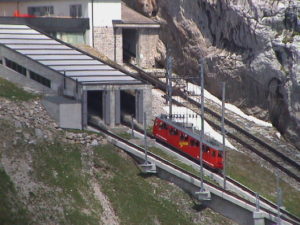A rack railway (also rack-and-pinion railway, cog railway, or cogwheel railway) is a steep-grade railway with a toothed rack rail, usually between the running rails. The trains are fitted with one or more cog wheels or pinions that mesh with this rack rail. This allows the trains to operate on steep grades above 10%, which is the maximum for friction-based rail. Most rack railways are mountain railways, although a few are transit railways or tramways built to overcome a steep gradient in an urban environment.

The line runs from Alpnachstad, on Lake Alpnach, to a terminus near the Esel summit of Pilatus at an elevation of 2,073 m (6,801 ft), which makes it the highest railway in the canton of Obwalden and the second highest in Central Switzerland after the Furka line. At Alpnachstad, the Pilatus Railway connects with steamers on Lake Lucerne and with trains on the Brünigbahn line of Zentralbahn.

The line is 4.6 km long, climbs a vertical distance of 1,629 m, and is of 800 mm gauge. Because of the rack system, there are no conventional points or switches on the line, only rotary switches (see photograph) and traversers. All rails are laid on solid rock, securing rails by high-strength iron ties attached to the rock, without using any ballast.

The line still uses original rack rails that are now over 100 years old. While they have worn down, it was discovered that this can be fixed by simply turning the rails over, providing a new wearing surface that would be sufficient for the next century as well. The cars’ electric motors are used as generators to brake the car during descent, but this electricity is not reused — it is just dissipated as heat through resistance grids. Originally, steam engines were used as compressors to provide dynamic braking, since the use of friction brakes alone is not practical on such steep slopes.
The line is operated seasonally: May to October. The cable car, which approaches from the other side, runs all year except for a short maintenance period. The Pilatus Railway was named a Historic Mechanical Engineering Landmark by the American Society of Mechanical Engineers in 2001.
According to wikipedia














